Alliums care and growing guide: expert tips for ornamental onions
Find out how to grow alliums and introduce these eye-catching pompom flowers to your planting scheme

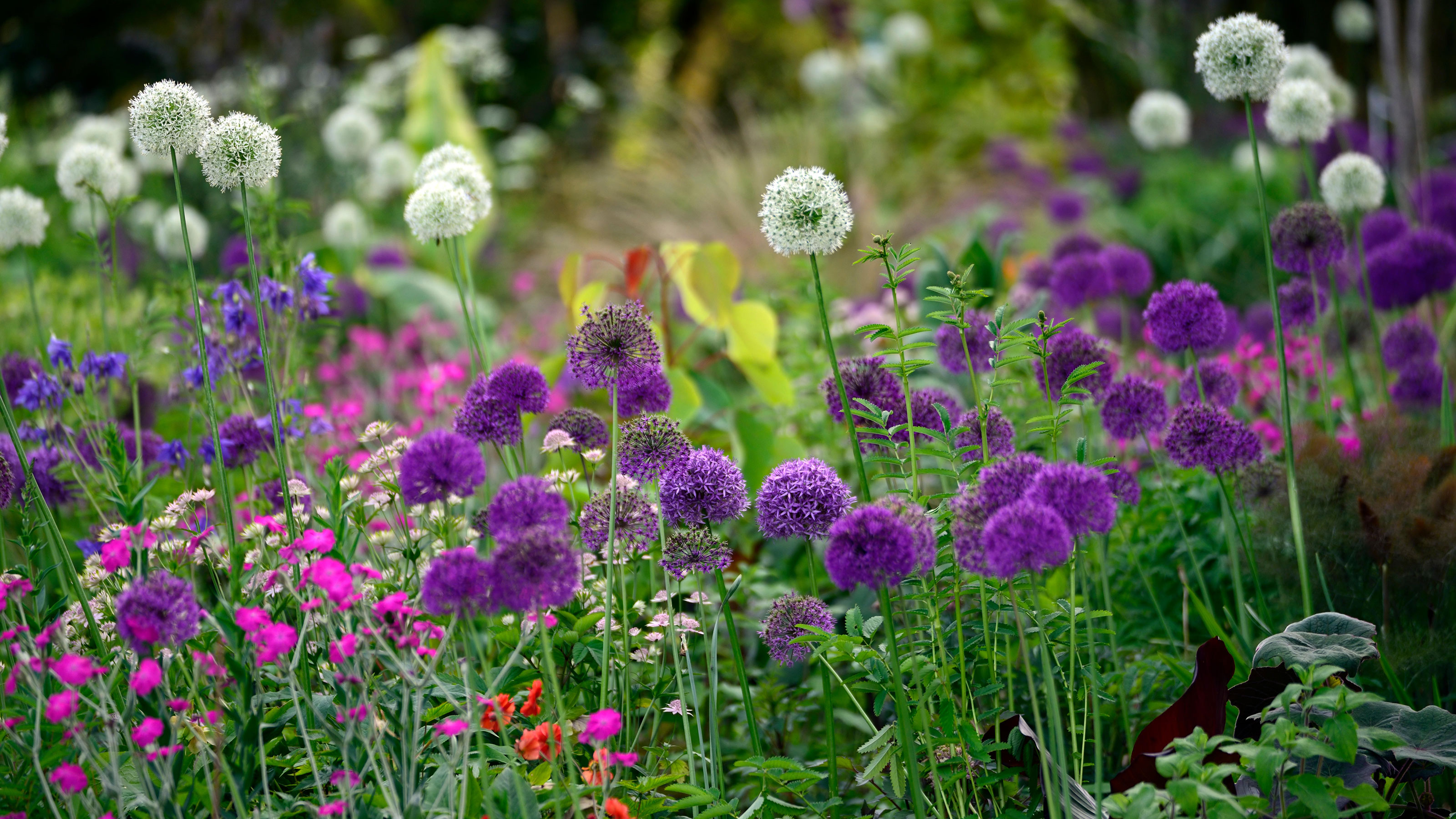
Alliums are instantly recognized by the smell of their leaves, especially when crushed. Edible types include onions, scallions and leeks. Herbs and flavorings include chives and garlic. Ornamental types, often known as ornamental onions, are grown for their attractive heads of tiny flowers.
Ornamental onions either grow from bulbs or make clumps of fleshy roots and may have a particularly pungent smell.
In all alliums, vertical stems are topped with clusters of tiny, tubular or star-shaped flowers gathered into heads of anything from 20 or 30 to many hundreds and up to 12in (30cm) across.
The leaves of alliums may be slender and almost thread-like, as in chives, or broader and flatter and up to 3ft (90cm) long as in ‘Globemaster’. They may die away during flowering or remain green until fall.
Many alliums are a firm favorite for striking flower bed ideas and are good planted between perennials in mixed garden borders, while perennial alliums tend to be shorter and ideal for the front of a sunny border.
'Ornamental onions perform beautifully, blooming late spring through early summer,' say Brent & Becky’s, America’s top bulb suppliers. 'They add a spectacular architectural dimension to the garden; many are suitable for Heirloom gardens and sunny, well-drained meadows; also as dried flowers and pollinator attractors.'
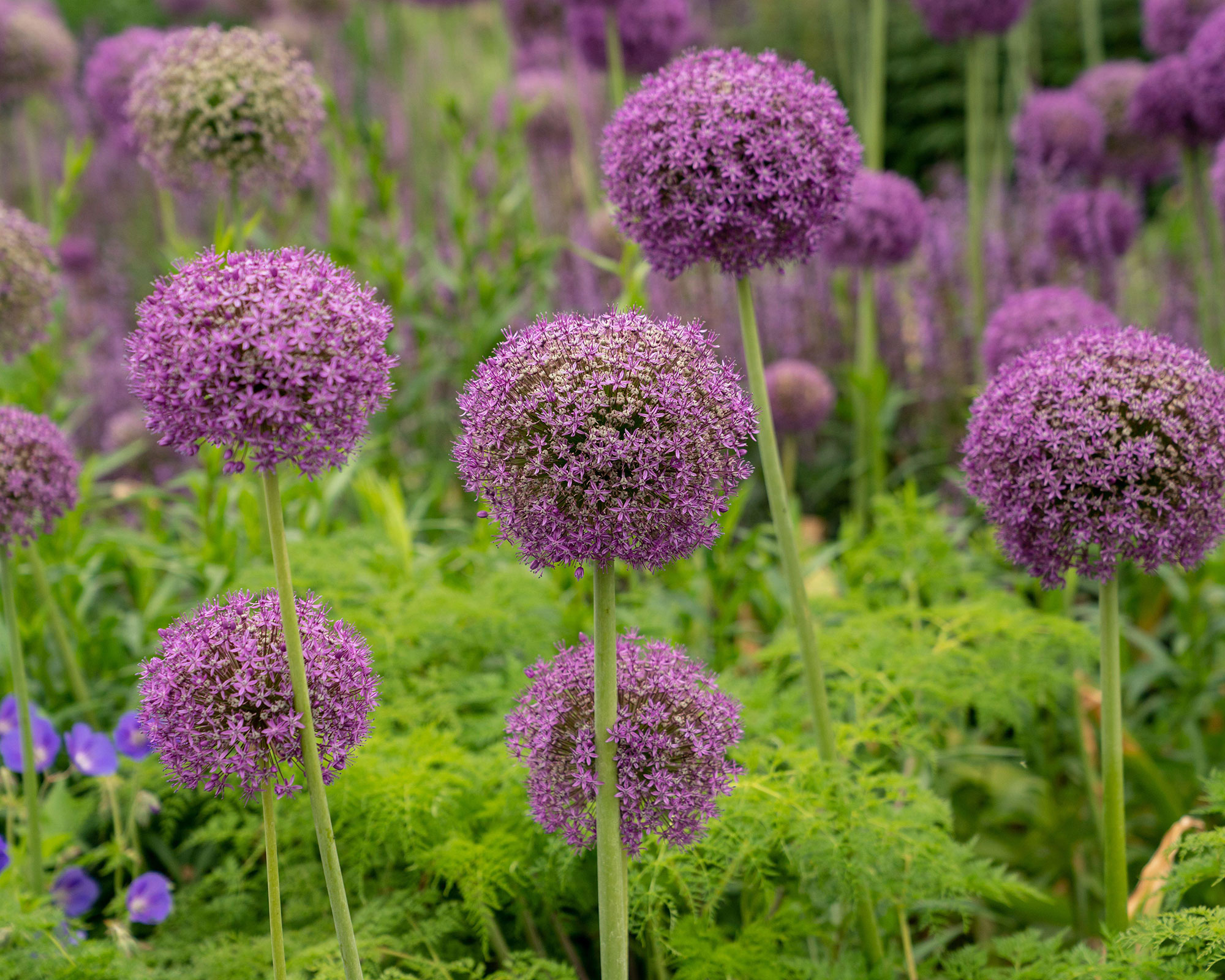
What are the different kinds of alliums?
Some alliums grow from bulbs, in the same way as daffodils, and eventually make clumps. Learning how to plant allium bulbs correctly will ensure you get the best results.
There are also other alliums that grow from slowly spreading roots.
- Alliums that grow from bulbs: These are mainly the drumstick alliums, with spherical heads crowded with lilac or purple flowers or shades or white. The leaves and the flower stems emerge at the same time in early spring, but as the flowers get ready to open the foliage may start dying away. The largest flower heads can be the size of a basketball, as in Allium schubertii, with its pale purple 12in (30cm) flower heads like exploding fireworks, or the slightly smaller Allium christophii.
Many of the most popular have flowerheads about the size of a tennis ball and these include ‘Globemaster’ (violet), ‘Purple Sensation’ (deep purple), Allium giganteum (lilac pink), and ‘White Giant’ (white). The deep purple flowers of Allium sphaerocephalon are smaller and come in heads the size of a large marble. The flowers are often tightly packed, as in ‘Ambassador’ (reddish purple), or may be gathered more loosely, as in ‘Jeanine’ (yellow). - Hardy perennial alliums: These are mainly shorter than alliums from bulbs, with foliage that stays in good condition for far longer, and they tend to spread steadily at the root as the years pass. Allium ‘Millennium’ is relatively new on the market but has quickly become popular, with its huge quantity of small heads of rosy pink flowers. ‘Millennium’ was Perennial Plant Association Perennial Plant of the Year in 2018 and has inspired new interest in alliums. Chives, of course, is one of the best herbs to grow in your garden, but its neat heads of pale purple, pink or white flowers are colorful for months and both flowers and foliage are edible. Look out too for Allium cyaneum, (blue), and Allium senescens (purple-pink) with its prettily twisted leaves.
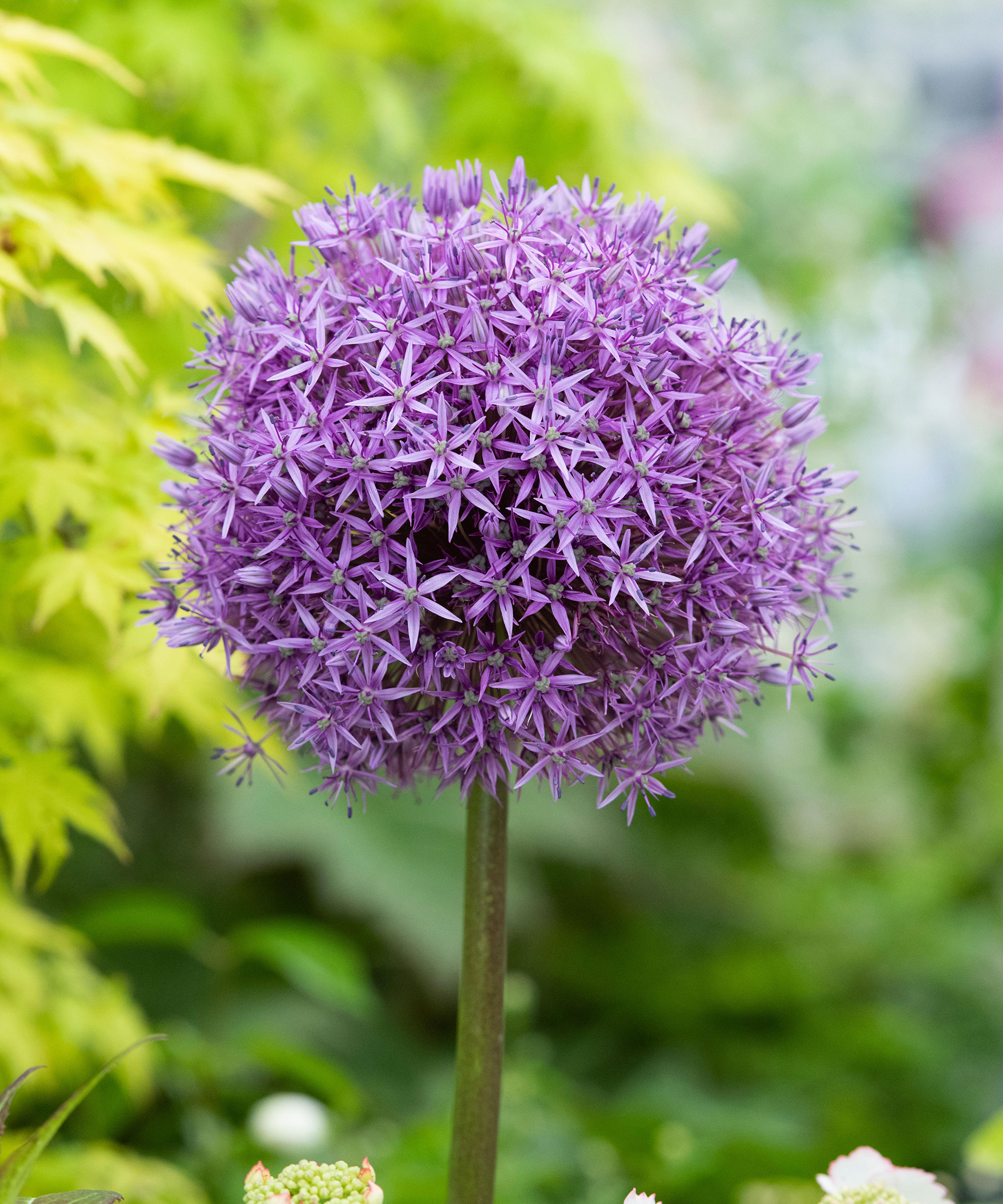
How to choose alliums for your garden
If you want to learn how to grow alliums, choosing the right variety is very much a case of selecting the right type for the right place in your garden borders, although they all prefer sun and good drainage. As allium flowers are at their peak at the same time that their foliage is drying up, it can be a good idea to plant summer perennials and heirloom roses around drumstick types to hide the brown leaves.'
The flower stems will grow up through hardy geraniums and columbines and foxgloves and ornamental grasses whose foliage will hide those old leaves too. Their colors associate well with these perennials and with roses.
Perennial alliums are good at the front of a sunny border and look especially good bordering on a stone garden path or the neat lines of a deck.
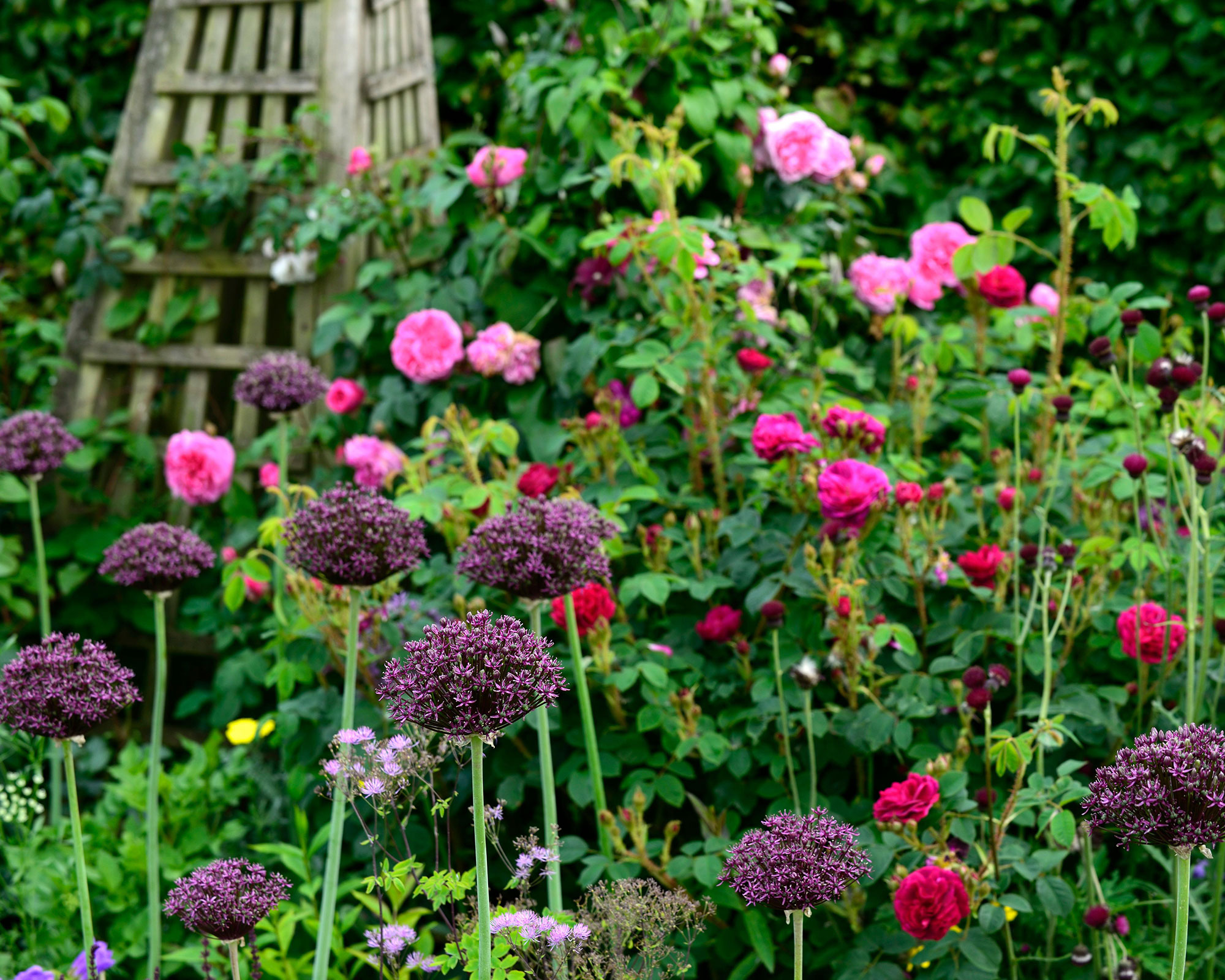
Planting tips for alliums
When it comes to planting bulbs, alliums are best planted in fall, 4-6in (10-15cm) deep, using a bulb planter or hand trowel. Very dense planting is sometimes suggested, planting at a very wide spacing is sometimes also recommended. Ignore both these suggestions, planting about 12in (30cm) apart will provide an effective group.
Clump forming perennial alliums can be planted in fall or in spring, or even in winter if the soil is not waterlogged or frozen. Do not plant them as deep as allium bulbs, they are much happier planted with their compost at soil level.
How to care for alliums
Once established there’s very little needed for alliums care, although taller varieties might need staking. Feeding with a general fertilizer in early spring will provide nutrients during their spring growth season.
Avoid deadheading flowers of bulbous types. Instead, as the last of the flowers fade, cut the flower head off at the base and hang in a shed to dry for winter interest in the home. Allow the leaves to die back naturally, pull them off when they are completely brown if they are not being hidden.
Clump forming alliums need little care beyond dead-heading and a spring feed. If growth starts to slow down, lift and divide and replant in spring.
Alliums don’t need overwintering, but if you've grown them in garden planters on your patio it's a good idea to move them to a sheltered spot as a precaution.

How to make more alliums
Allium bulbs produce offsets, small bulbs on the side of the main bulb. The bulbs can be dug up in fall, and both the large, flowering size bulbs and the smaller offsets replanted.
Clump forming alliums can be dug up as part of your spring garden jobs, split into a number of smaller pieces and replanted in new soil.
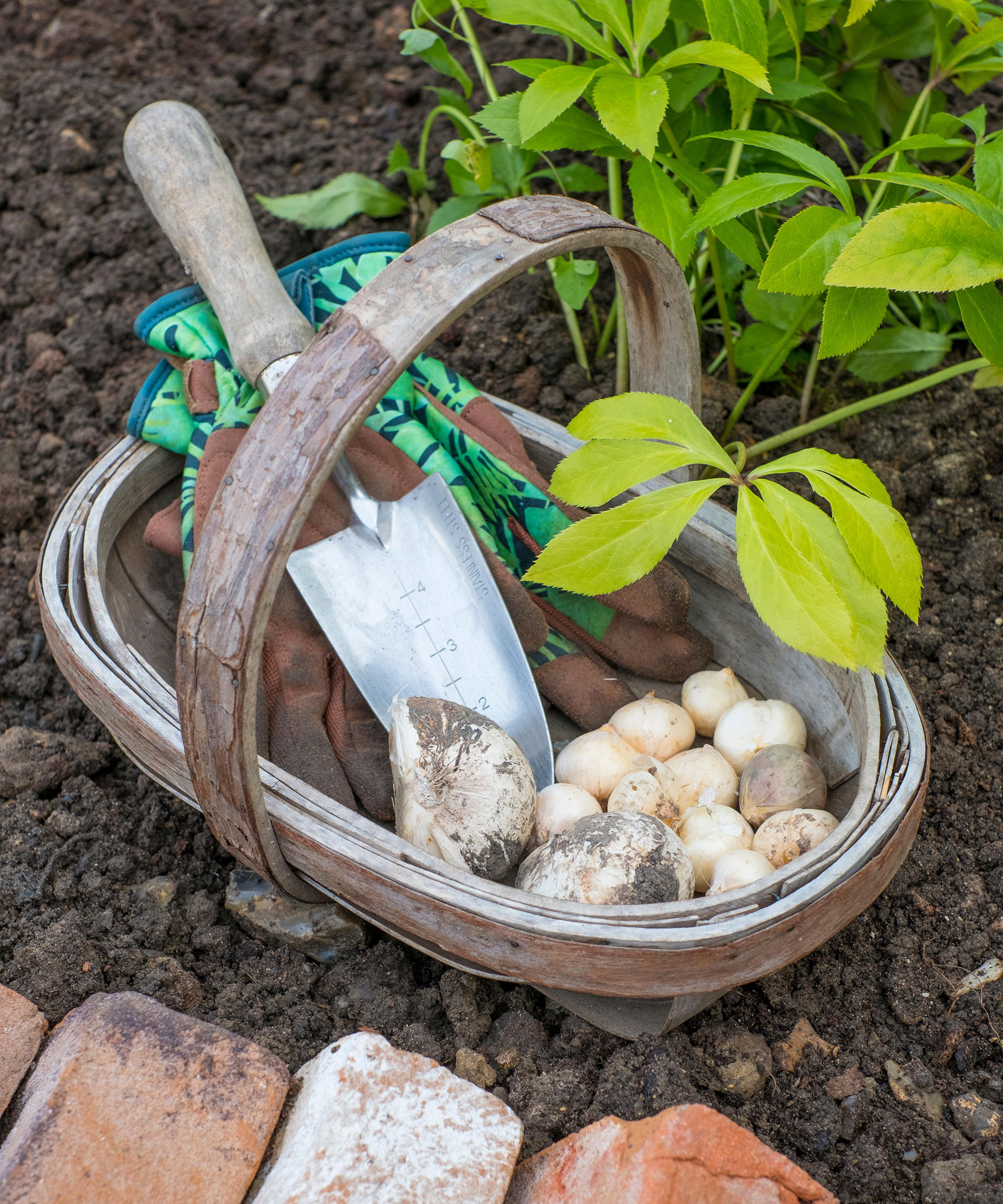
Allium pest problems and how to solve them
In recent years a new pest has been causing problems for gardeners, especially in the Mid-Atlantic states of the US. Leaf miner is a tiny fly that lays its eggs on both ornamental and edible alliums. The egg hatches into a grub that then burrows through the leaf, just under the leaf surface, causing pale tunnels. It can also move down into the bulbs, eating as it goes. The damage can also provide an entry point for various damaging rots.
Onion and garlic crops grown in raised garden beds can be protected using floating row covers or insect netting but this is not appropriate in the flower garden. There is an organic treatment, Monterey Garden Insect Spray, available from Amazon, which is an option worth trying.
Do alliums come back every year?
Yes, alliums will grow back each year. All alliums are long-lived plants although they may fade away if planted in the wrong place – such as in soggy soil types or in shade. Even better is that after a few years they start to multiply so can be a great choice if you're on the lookout for cheap garden ideas.
Sometimes the bulbs are pushed out of the soil as they start spreading. If this happens, in late autumn or very early spring, carefully lift them and gently peel off the new baby bulbs, then plant them straight back in the soil.
Chives, some other clump-forming types, and also allium bulbs often shed their seeds. These can sprout, sometimes in large numbers, but will take a few years to reach flowering size.

Do alliums make good cut flowers?
They may not be your first thought when considering the best cutting garden flowers, but arranged either separately as single blooms or a few grouped together in a tall vase, alliums make a stunning indoor display that lasts a couple of weeks. Just add a dash of bleach to the water to keep the taint of onions at bay.
If you want to mix in some foliage try a couple of stems of ornamental grass. The seed heads also look wonderful in autumn arrangements.

Are alliums deer resistant?
Yes, alliums are good deer-resistant plants as the pungent taste of alliums deters the deer from eating them. Not only that, but rabbits also avoid eating alliums and squirrels do not dig up and eat the bulbs as they do with tulips and crocuses.
What USDA zones do drumstick alliums grow in?
A few alliums, including some drumsticks, are hardy in USDA zone 3 and these include chives, ‘Mount Everest’, ‘Purple Sensation’, Allium christophii and ‘Jeanine’. Most drumsticks, most other alliums grown from bulbs and most clump forming alliums are hardy in USDA Zone 4 (H6).
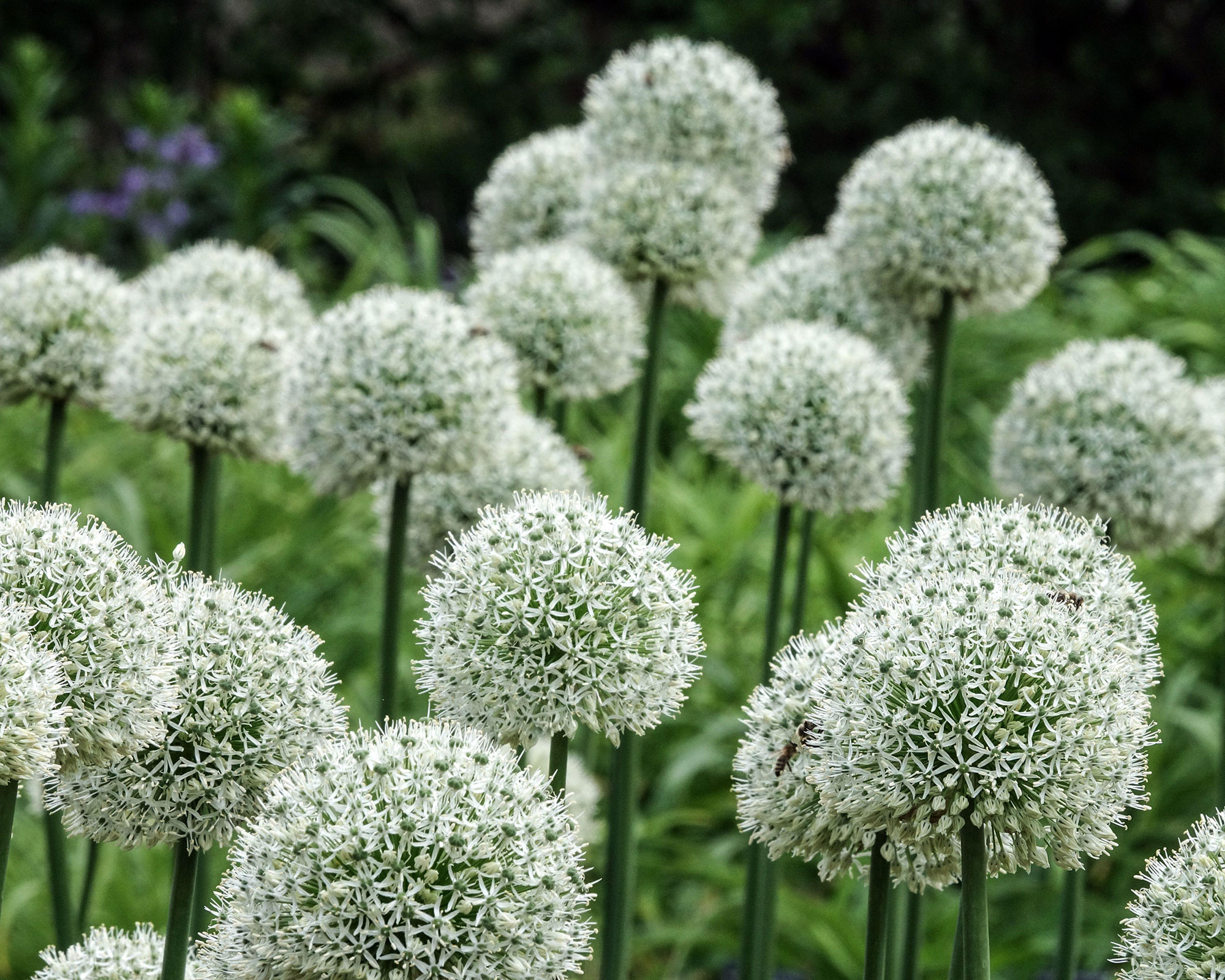
Are alliums invasive in the US?
Most garden alliums do not spread and cause problems although two European species that are not usually grown in US gardens can be considered invasive plants. White garlic, Allium neapolitanum, is listed as a noxious weed in California while European wild garlic, Allium vineale, is a problem over much of the country.
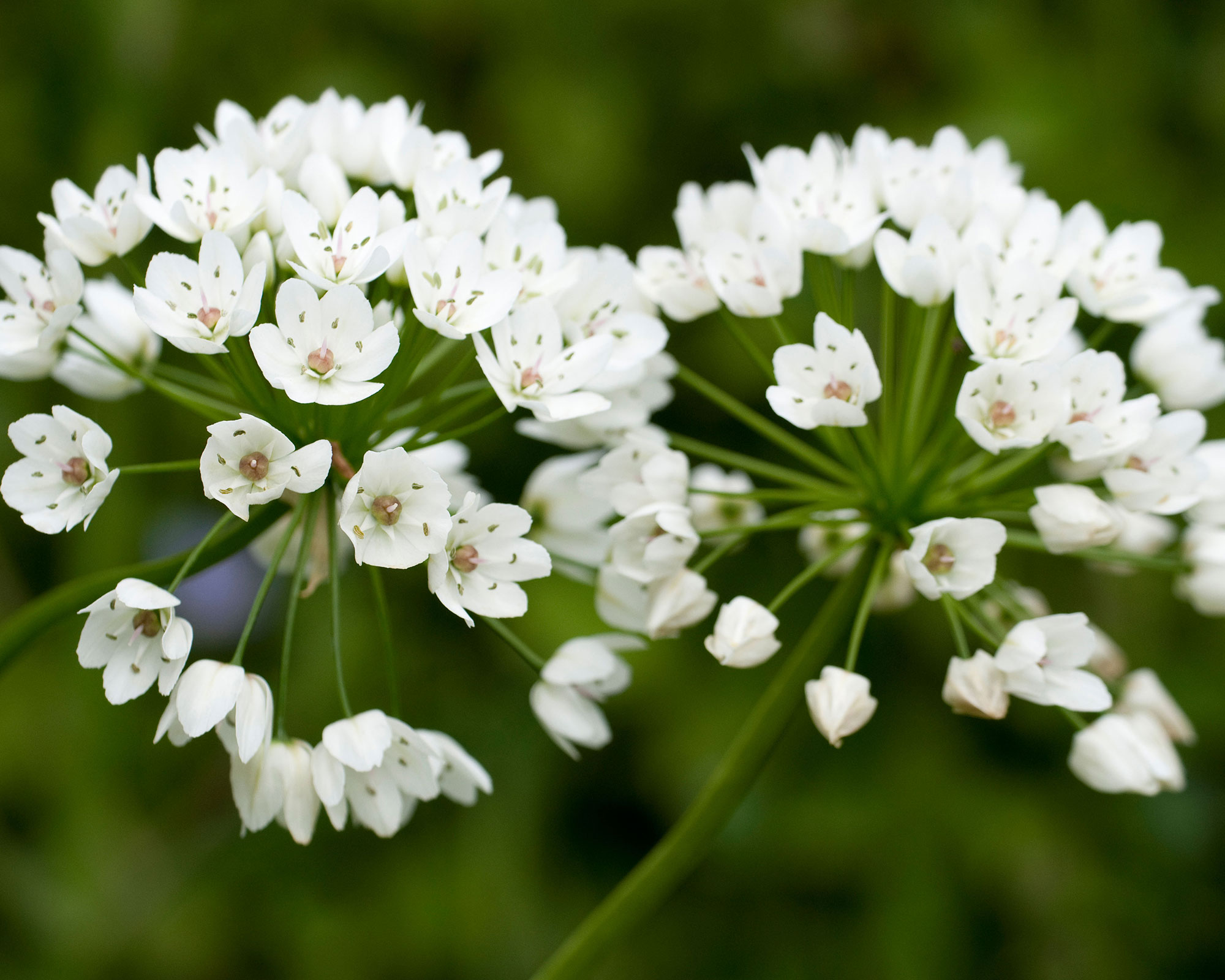
Where to buy alliums
The most economical way to buy most alliums is to buy bulbs from a mail order bub supplier, where you will also find the widest choice. Bulbs are also sold in retail nurseries and garden centers.
These impressive alliums from bulbs are also sometimes sold in garden centers in pots in flower. This is a very expensive way to buy them. Better to wait till fall and buy bulbs which are far better value.
Perennial alliums, including chives, are usually sold in small, often pint size, pots by mail order and also in flower at retail nurseries.
Where to buy alliums in the US:
- Shop alliums at Amazon
- Shop alliums at Burpee
- Shop alliums at Brent & Becky's
- Shop alliums at Eden Brothers
- Shop alliums at High Country Gardens
- Shop alliums at Home Depot
- Shop alliums at Walmart
- Shop alliums at White Flower Farm
Where to buy alliums in the UK:

Graham Rice is a garden writer who has won awards for his work online, and in books and magazines, on both sides of the Atlantic. He is a member of a number of Royal Horticultural Society committees and the recipient of the 2021 Garden Media Guild Lifetime Achievement Award.
